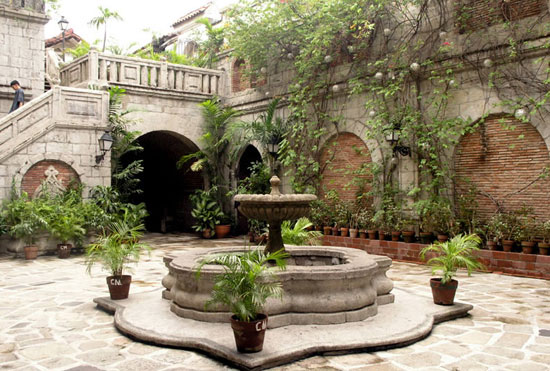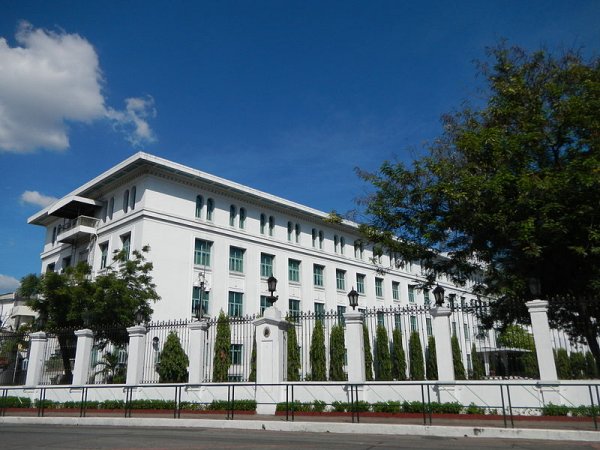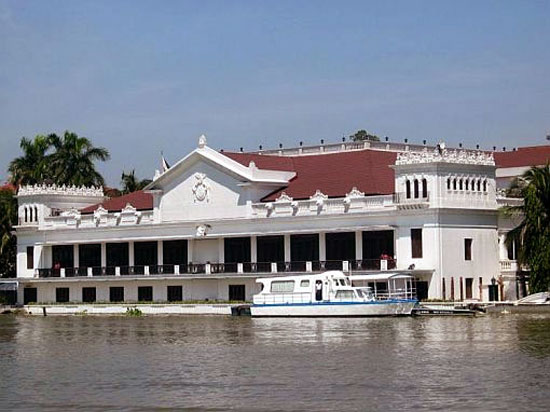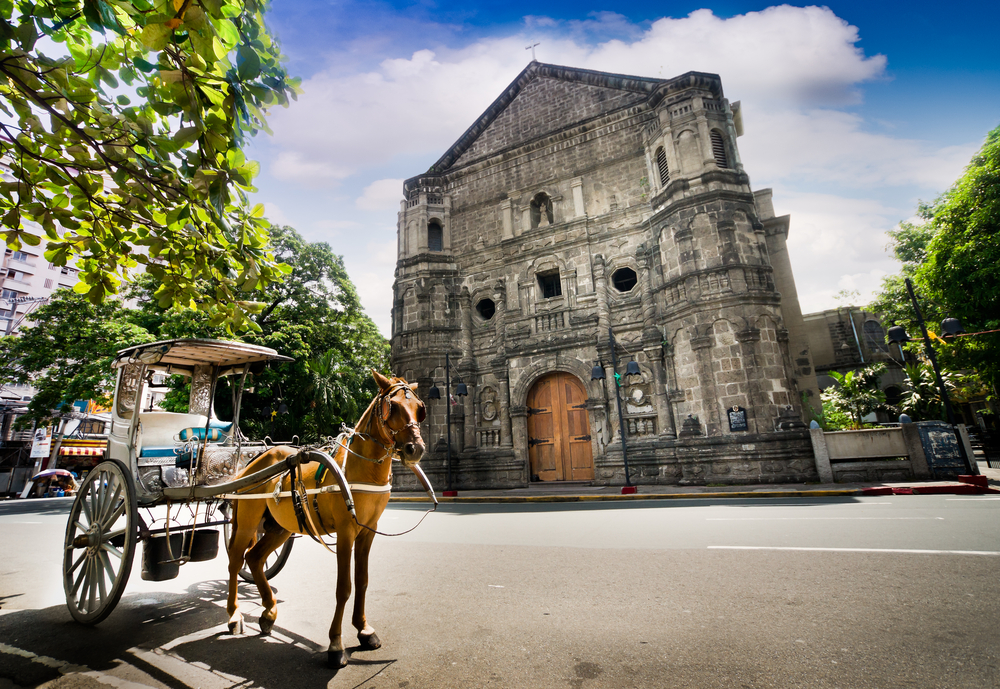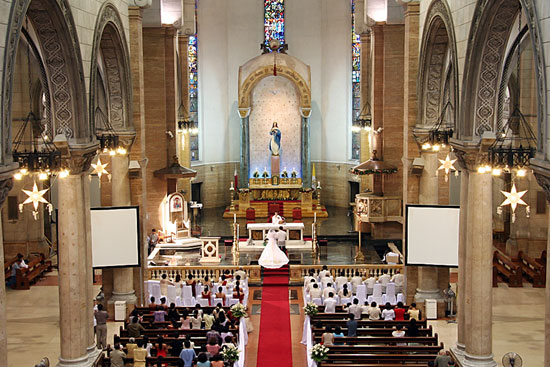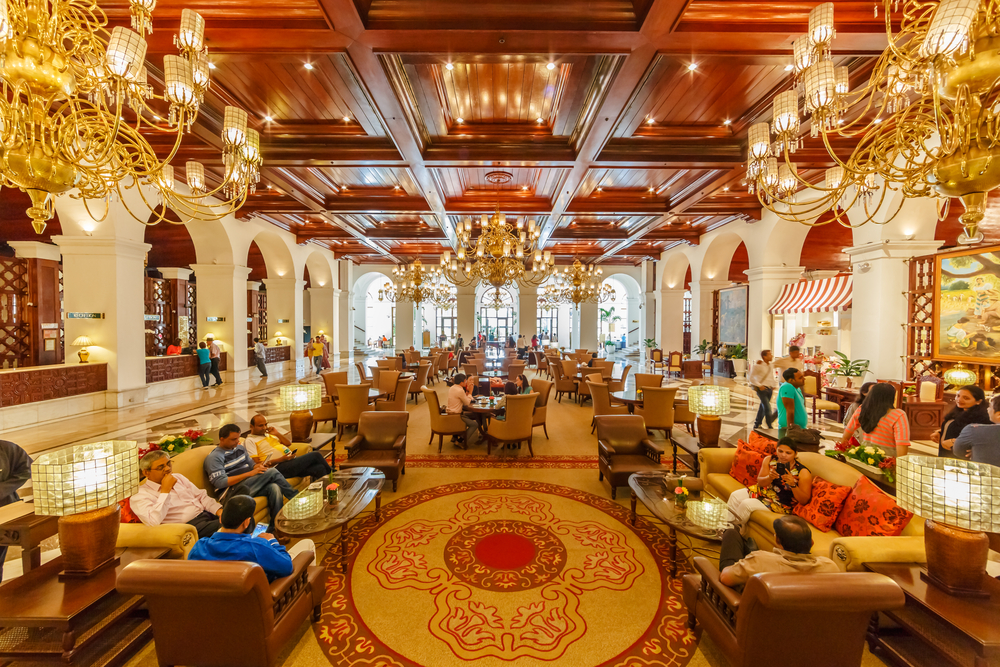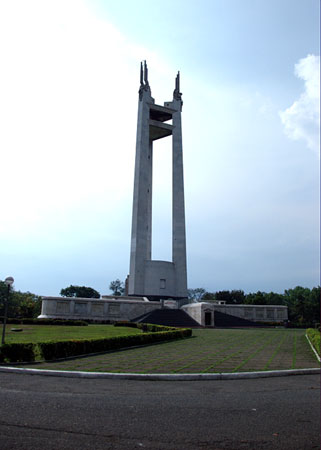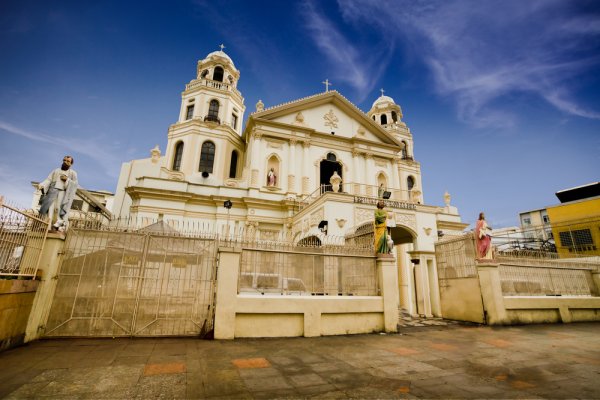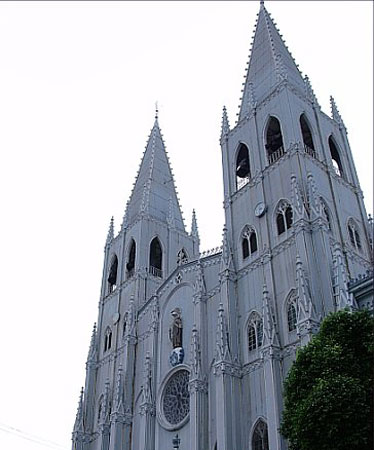Points of Interest
Casa Manila
Plaza Luis Complex, General Luna Street, Intramuros
Manila, Philippines
Casa Manila is well worth a visit if you want to understand how the other half, the illustrado (Spanish ruling class), lived in the colonial era. Imelda Marcos made the authentic restoration of this grand 19th-century mansion her pet project. Ming vases, Victorian furniture, and indigenous artifacts fill its three levels, while the walls are decorated in typical baroque style. The high ceilings, louvers, and capiz windows were installed for ventilation purposes, as the Spanish could never quite get used to the Manila heat. The top floor extends slightly over street to offer shade to pedestrians. Most interestingly, the ground floor consists of adobes, volcanic rocks quarried from Makati and Meycuayan.
Malacañang Palace
Palasyo ng Malakanyang 1000 Jose P Laurel Sr
San Miguel, Manila, Philippines
Malacañang Palace, also known as Malacañan Palace, is situated on the Pasig River. Originally a summerhouse of the Spanish governor-general, the palace was constructed in 1802 and, since 1937, has been the official residence of the Philippines' presidents. It was built in a typical Spanish architectural style with arches, patios, balconies, and sliding windows whose panes are made up of capiz shells. The palace houses the Bonifacio Hall, Kalayaan Hall, Mabini Hall, and the New Executive Building, as well as other smaller buildings. The exterior consists of the Malacañang Park, Bahay Pangarap (presidential guesthouse), and a recreational hall. The Kalayaan Hall houses the Malacañang Museum, which exhibits the history of the palace.
Malacañang Palace
Palasyo ng Malakanyang 1000 Jose P Laurel Sr
Metro Manila, Philippines
Malacañang Palace, also known as Malacañan Palace, is situated on the Pasig River. Originally a summerhouse of the Spanish governor-general, the palace was constructed in 1802 and, since 1937, has been the official residence of the Philippines' presidents. It was built in a typical Spanish architectural style with arches, patios, balconies and sliding windows whose panes are made up of capiz shells. The palace houses the Bonifacio Hall, Kalayaan Hall, Mabini Hall, and the New Executive Building, as well as other smaller buildings. The exterior consists of the Malacañang Park, Bahay Pangarap (presidential guesthouse), and a recreational hall. The Kalayaan Hall houses the Malacañang Museum, which exhibits the history of the palace.
Malate Catholic Church
2000 M.H. Del Pilar Street
Malate, Manila 1004, Philippines
Malate Catholic Church is an unique Muslim-baroque style church and one of the oldest churches situated outside of Intramuros. The church was probably built in the 16th century, and the original images housed in the church were shipped from Spain in 1624. The church's two main features are the consecration of the basilica to Nuestra Señora de Remedios (Our Lady of Remedies) and the statue of the Virgin Mary dominating the altar.
Manila Cathedral
Cabildo cor. Beaterio, Intramuros
Manila 1002, Philippines
Manila Cathedral, the seat of the Archdiocese of Manila, was elevated to the position of Minor Basilica of the Immaculate Conception in 1981. Consecrated in 1958, the cathedral was built on the site of the previous cathedral, which was destroyed by bombing in 1945. The exterior of the cathedral is dominated by travertine stone statues of famous saints, a rose-glass window, and the eight bronze panels of the main portal. The interiors consist of eight chapels and two bronze angels, the main altar, Episcopal Throne, a pulpit, crypt, and the choir loft. The main features are the naranja cupola (half-orange dome) and 134 stained glass windows.
Manila Hotel
1 Rizal Park
Manila, Philippines
Arguably, the Manila Hotel is as much a place of historical interest as it is a place of accommodation. As soon as you enter the lobby you'll hear the string quartet playing and see the large vintage armchairs and glass-topped tables. You'll feel like you've been transported back to 1912, when the hotel was first opened. General Douglas MacArthur lived on the top floor while he masterminded the defeat of the Japanese in World War II—the archives pertaining to this are available for public view. Other famous past guests include The Beatles, John F. Kennedy, Ernest Hemingway, and Marlon Brando. The restaurant can be a bit pricey, but it offers gourmet-level fare with French, Filipino, Chinese, and Japanese options. If you're feeling flush, pop into the deluxe Champagne Room.
Quezon Memorial Circle
Elliptical Road
Quezon City, Manila, Philippines
This 66-meter-tall (217 foot-tall), three-pylon monument topped by decorative angels is the sightseeing showpiece of Quezon City. Its construction as a mausoleum for Manuel L. Quezon, the first president of the Commonwealth of the Philippines under US colonial administration, began in 1940. The expense of importing and cutting the Carrara marble used in the monument delayed construction considerably. Visitors can climb up to a drum-shaped viewing room positioned near the top of the Circle and admire the panorama. You'll find a museum detailing the history of Quezon City inside the monument. Local people relaxing, picnicking, and playing ball games take over the large stretch of parkland around it on the weekends. Fast food joints and street food vendors serve the visitors.
Quiapo Church
Quezon Boulevard, Plaza Miranda
Quiapo, Manila, Philippines
The Quiapo Church (also referred to as the Church of the Black Nazarene) was originally established in 1586 and is one of Manila’s most popular churches. The church was painted its current cream color after a fire in 1928. The church is well known for the Black Nazarene, a life-sized statue that dominates the church. The church is crowded every Friday as devotees flock to offer prayers by lighting candles in front of the statue. The main feast of the church, the Feast of the Black Nazarene, is celebrated on January 9. On Good Friday, believers carry the statue through the city streets in a huge procession.
San Agustin Church
General Luna Street, Intramuros
Manila 1002, Philippines
San Agustin Church, built between 1587 and 1606, is one of the Philippines' oldest churches and one of only four Baroque churches in the country. Located in Intramuros (the walled city), the present church is the first European stone church built using a Spanish architectural style. Visitors who go through the beautifully carved entrance door can admire the 19th-century chandeliers, a magnificent pulpit, 14 side chapels, an 1800s pipe organ, and a trompe-l'oeil ceiling. The choir loft has hand-carved 17th-century seats made of molave wood. The church also houses underground tombs of the Spanish conquerors. A small museum lies next to the church and exhibits church artifacts.
San Sebastian Basilica
Basilica Minore de San Sebastian Pasaje del Carmen Street
Quiapo, Metro Manila 1000 Philippines
Basilica Minore de San Sebastian is a fine instance of revivalist Gothic architecture and is Asia's only all-steel church. It is situated in Quiapo district in the lot donated by Don Bernardino Castillo, a benevolent patron and a famous devotee of San Sebastian. The church became a minor basilica in 1890, and it was inaugurated and dedicated in 1891. The interior of the basilica exhibits groined vaults and steel columns, and the walls and ceilings were colored to give it an appearance of marble and jasper. The confessionals, pulpit, and, altars are all designed in a neo-Gothic style, and trompe l'oeil paintings adorn the interior walls.
Copyright © 1993—2024 World Trade Press. All rights reserved.

 Philippines
Philippines 